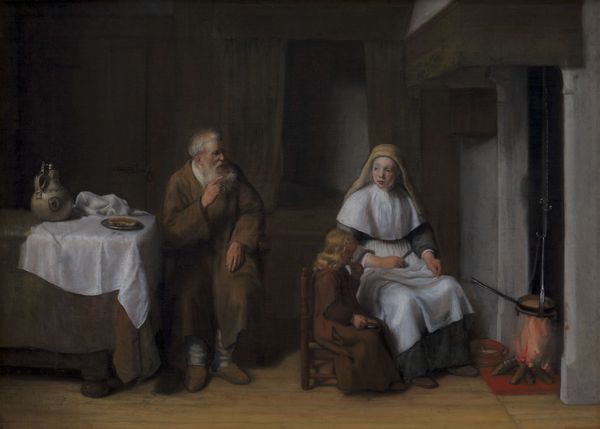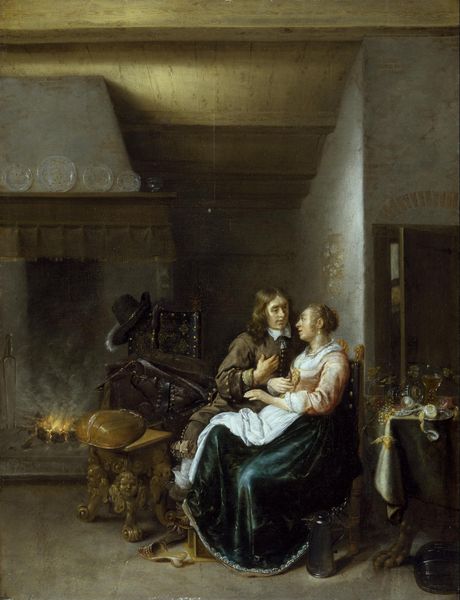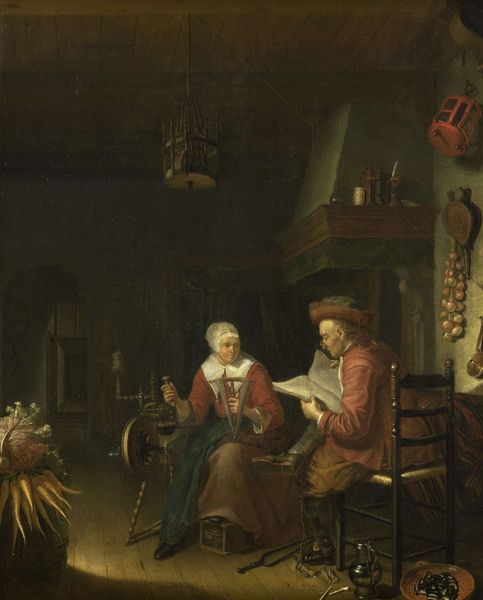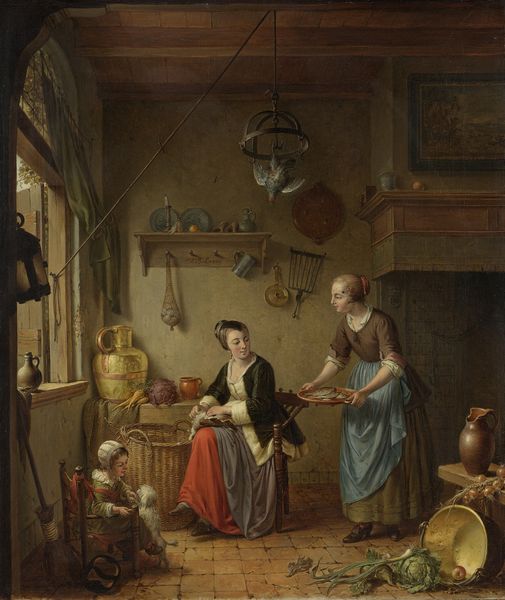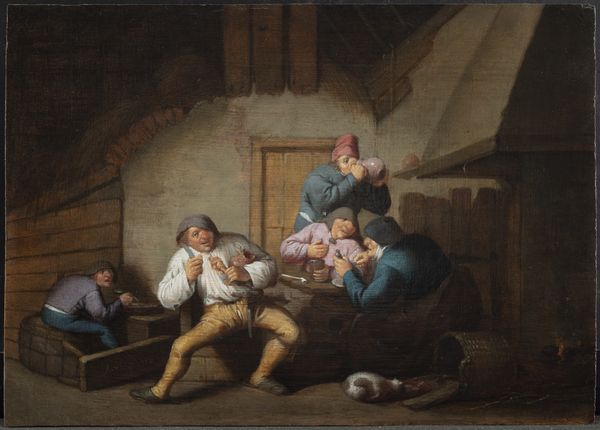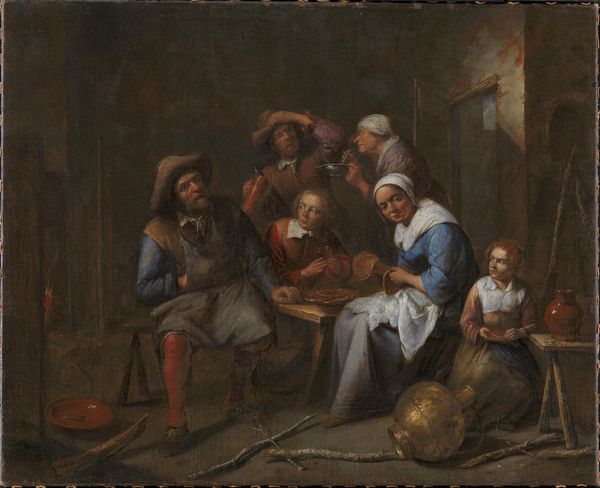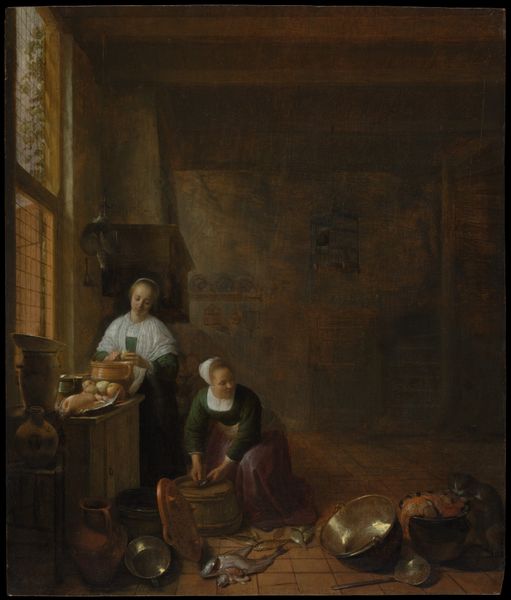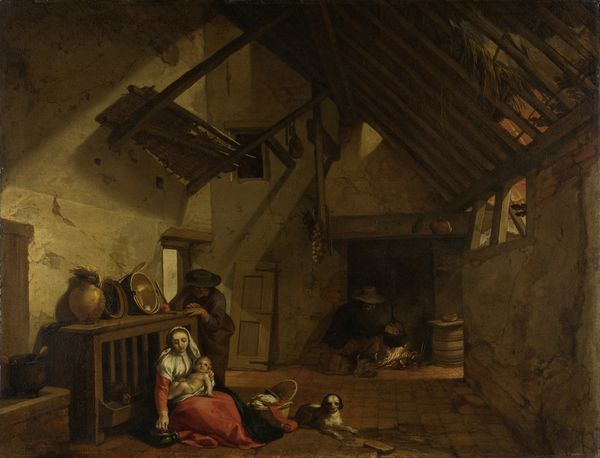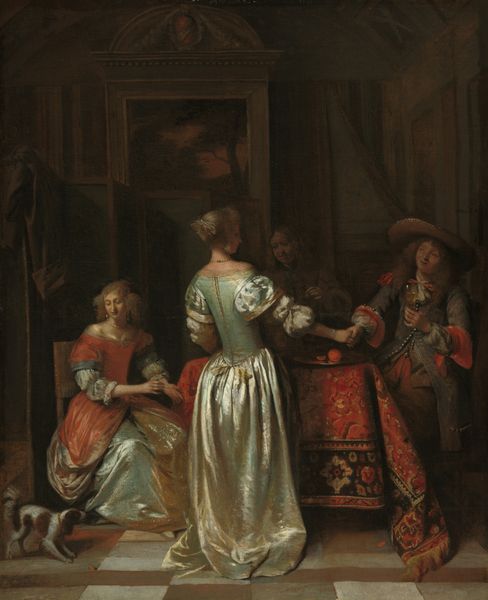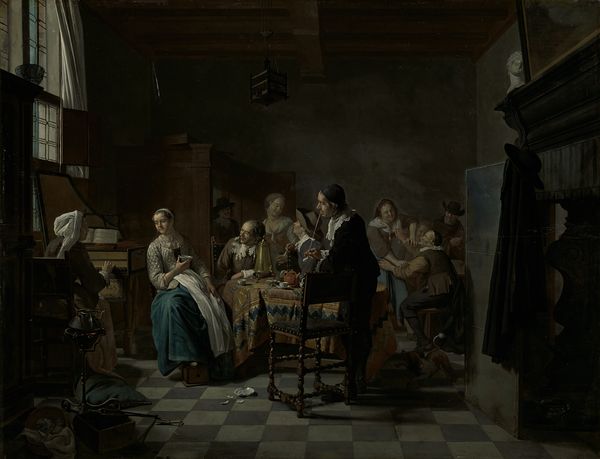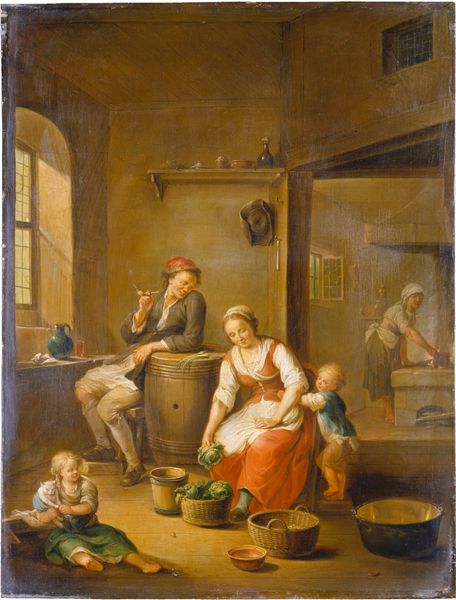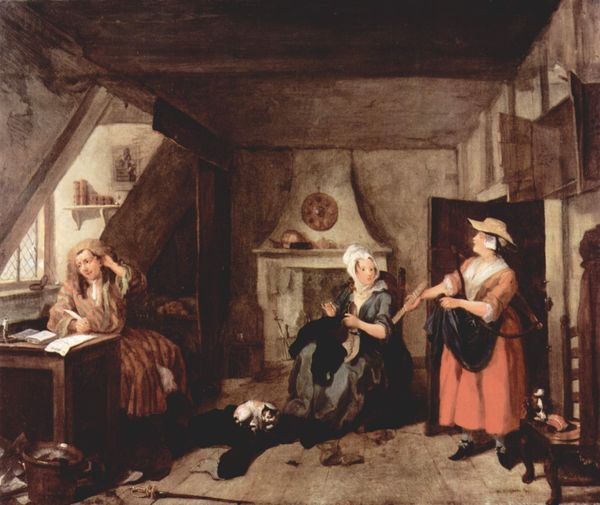
painting, oil-paint
#
portrait
#
mother
#
baroque
#
dutch-golden-age
#
painting
#
oil-paint
#
child
#
genre-painting
#
realism
Dimensions: 56.9 × 48.4 cm (22 3/8 × 19 1/16 in.)
Copyright: Public Domain
Editor: Here we have "A Mother Feeding her Child (The Happy Mother)" created in 1707 by Willem van Mieris, rendered beautifully with oil paint. I’m struck by the details of everyday life depicted; there’s a very raw, domestic quality to the scene. What draws your eye to this piece? Curator: Well, I see a window into the material culture of the Dutch Golden Age. Let’s look beyond just the representation of "a happy mother" – consider the labor embedded in the making of this image. Who ground the pigments, stretched the canvas, prepared the size? And who eventually consumed it, hanging it in their home? These are questions of labor and class relations. Editor: That's interesting. I was focusing on the scene within the painting - the mother, the child, even the dog! Are you suggesting that the painting *itself* is also an object with its own context? Curator: Precisely. Consider the rising merchant class in 17th-century Netherlands. Paintings like this weren't just art; they were commodities. How does van Mieris's choice of oil paint and that smooth, almost enamel-like finish impact its reception and value? Does it make it more prestigious? Editor: So the materials themselves signal social standing. The textures – the wood grain of the furniture, the shine on the pewter – all contribute to the impression of wealth and stability…even the mother's labour is subsumed by that impression. Curator: Exactly. What we see presented as an intimate scene of domesticity is also a carefully constructed presentation of status, achieved through the artist’s skillful manipulation of materials and the labor of many. Editor: I hadn't considered that. Now, I see how much this reflects broader economic realities. Curator: Indeed. Art isn’t just about aesthetics, but the social and economic structures that enable its production and consumption. Thinking about paintings as commodities gives us a richer understanding.
Comments
No comments
Be the first to comment and join the conversation on the ultimate creative platform.
